#Paul’s boutique era
Explore tagged Tumblr posts
Text

I love this…. So much
35 notes
·
View notes
Text
WW I Part II
Women's fashion has less ornament and detail. Pockets were stictched on the exterior of women's skirts and jackets instead of hidden in seams. Jackets were worn longer over the hips and looser fitting with belts wrapped around the waist. Women's waists were no longer emphasized as they had been with corsetted dress. Women's skirts were shorter and showed their shoes.

Suits by Chanel in silk and wool jersey.
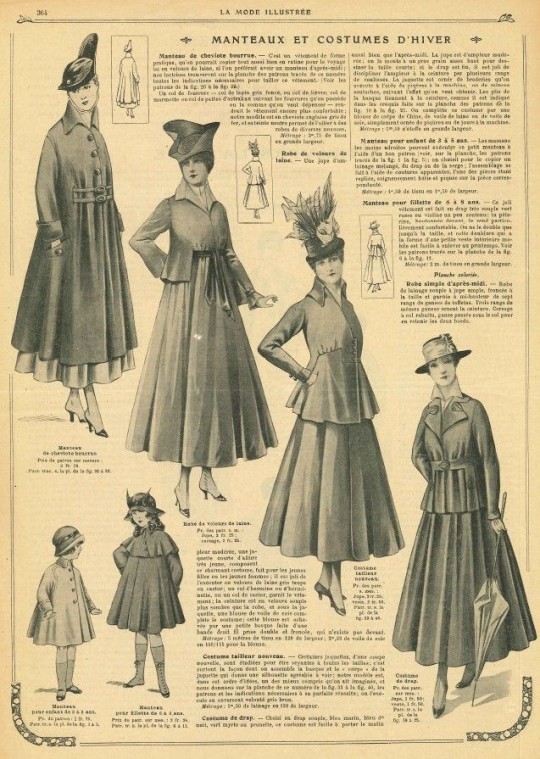
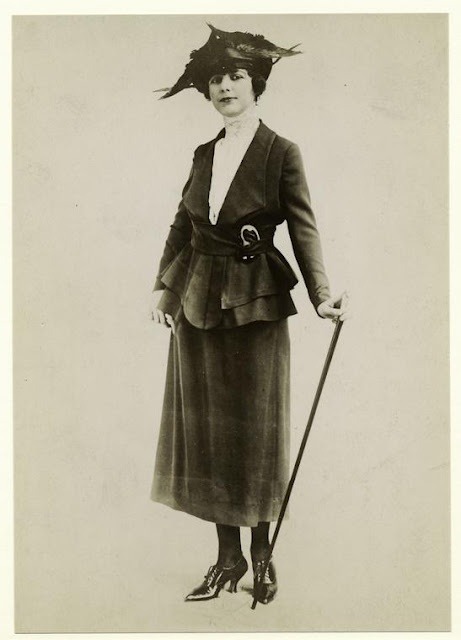
La Mode Illustrée, October 8, 1916 | Woman's suit • 1918
Though we don't think of haute couture and war as having anything in common, in France the manufacturing and export of fashionable clothing for women helped to keep the economy going during World War I.

Fashion Plate for the French magazine Les Elegances Parisienne • 1916

While Coco Chanel got her start during the great war, it was Paul Poiret who was the star of the era's high fashion. Referred to as the King of Fashion in America in the 1910s, Poiret is most famous for his designs influenced by Orientalism, Neoclassicism, and Surrealism; the kimono, the Turkish trouser, the slit skirt, and the famous lampshade dress. Mostly, he is remembered for his stance on women’s fashon and the simplification of the female silhouette. He dismissed the petticoat and the corset, as the trends shifted away from tailoring toward draping. He disliked the word fashion, opting instead to design women’s clothing solely as an expression of individuality. “Women are wrong for following one style,” he said.

Paul Poiret's "lampshade" fashions


Chanel photos. The one on the right was taken in front of her first boutique in 1914.
#fashion history#women's fashion history#ww 1 fashion#chanel#paul poiret#the resplendent outfit fashion/art blog#vintage fashion photos#the lampshade dress#1910s fashion catalog#1910s fashion plates
43 notes
·
View notes
Text
How Post-Punk Influenced Nowadays Fashion
It's been a long time since Malcolm McLaren opened his boutique "Sex" in the 1970s, and Vivienne Westwood equipped the Sex Pistols with their iconic outfits and sent them out onto King's Road. The approach back then was: "Being anti at all costs, against the establishment." Eventually, it turned into "Do It Yourself." It was fashionable because it tried not to be fashionable.
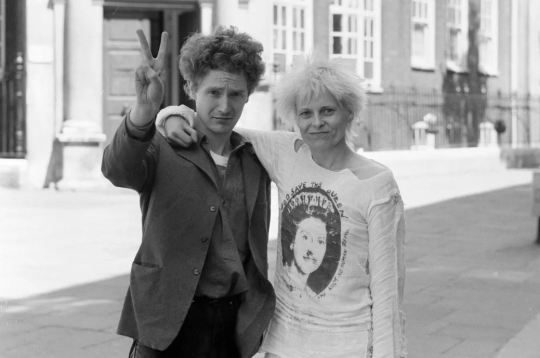
A few years later, members of Joy Division met at a Sex Pistols show in 1976 and started as a punk band. However, it soon evolved into something entirely different. When you listen to old Joy Division songs like "Warsaw" you can clearly hear the punk rock influences, but the band quickly started to deviate from the common motifs of the genre.
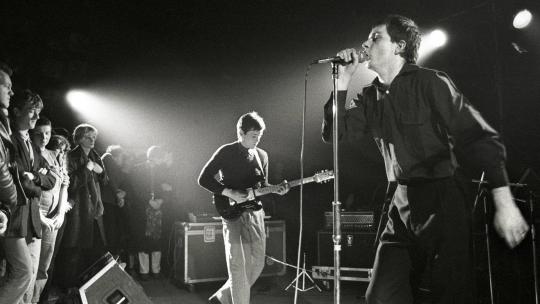
The music slowed down. The noisy guitar sound of punk was subdued to appear more intriguing, and Ian Curtis's existentialist lyrics, influenced by authors like Fyodor Dostoevsky, Jean-Paul Sartre, and Franz Kafka, focused not on chaos, rebellion, and hedonism but reflected his fears, physical sufferings, and the absurdity in the face of the zeitgeist and social influences of the 1970s and 1980s, marked by changes and political uncertainty, forced Joy Division to experiment.
They created not only something musically unique but also something aesthetic. For example, with their monochromatic designs on their album covers for "Unknown Pleasures," which is probably the third best-selling T-shirt in fast fashion stores, alongside Nirvana and the Ramones T-shirts. Joy Division ended in 1980 after Ian Curtis hung himself in his kitchen. They not only helped shape the sub-genre "Post-Punk" but were also the unofficial soundtrack of existentialism. The soundtrack that made Joy Division's music feel so genuine. Because it was genuine.
Of course, in the 1960s, there were artists who processed existential themes in their lyrics. A good example would be Lou Reed of The Velvet Underground, who, heavily influenced by literature, dealt with many serious topics in his lyrics. However, it wasn't just their music; it was also their appearance that defined Joy Division. On stage, in promo pictures, and in interviews.
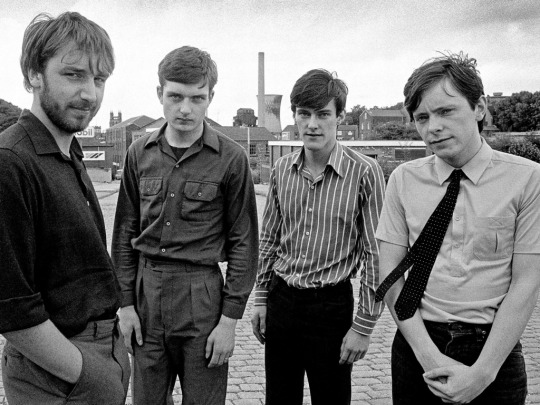
Ill-fitting shirts from army surplus stores, old man's pants, a few pair of derbies, big raincoats. Everything that was atypical for the punk movement, and many other artists, including The Cure, The Smiths, Siouxsie Sioux and the Banshees, Bauhaus, Alien Sex Friend or Sisters Of Mercy, went in the same direction: Through a dark, introspective, sometimes minimalist, but avant-garde aesthetic, they set themselves apart from punk and society, and looking at bands from the Post-Punk Revival from the 2000s like Interpol, Iceage, Molchat Doma, Boy Harsher, or Cold Cave, it quickly becomes apparent that this aesthetic has proven itself for almost 50 years.

This trend was, of course, not only an inspiration for musicians but also for artists, fashion designers, architects, and many more.
One designer that immediately comes to mind is Antwerp-Six member Ann Demeulemeester from Belgium, whose influences clearly evoke artists like Siouxsie Sioux or Patti Smith but also the playful goth look of the 1980s era by Rei Kawakubo (Comme Des Garcons) or Japan's goth father himself: Yohji Yamamoto.
Her story begins in Antwerp, where she initially studied at the Royal Academy of Fine Arts and quickly got to know the other Antwerp-Six members. She and the Antwerp Six presented their collections at Fashion Week and quickly became highly esteemed designers, now considered among the greatest designers of all time. Many of Ann's collections featured songs by Patti Smith, Nick Cave and the Bad Seeds, or The Velvet Underground.
This alone shows the influence of Post-Punk on Ann Demeulemeester's designs. Her asymmetrical cuts and draperies, her monochromatic, Kawakubo and Yamamoto-inspired, mainly black designs were groundbreaking, bringing avant-garde ideas in a consumable form to the people.
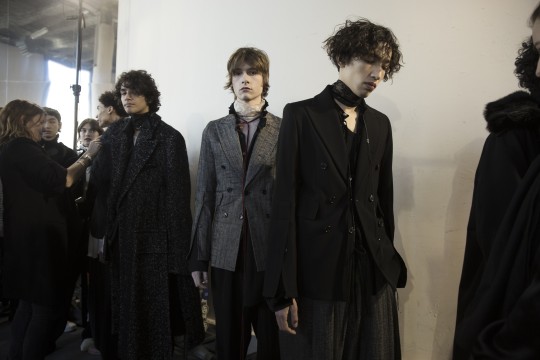
Another noteworthy designer from Antwerp is Raf Simons and his collections. Raf Simons grew up in the 1980s and was deeply rooted in the punk and goth subculture, whose influence can be traced in many of his collections or directly referenced by Raf himself. Notable are his A/W96 collection, which includes all-black looks with jet-black dyed hair and long black overcoats, his A/W99 collection with direct Joy Division references, black cloaks, and Gothic looks on the runway.
Raf's most famous collection A/W02-03 Riot Riot Riot! A coveted collection featuring cutoff and distressed hoodies, repurposed military garments, and loaded with punk references through patches. Among them, a bomber jacket with a patch depicting the self-harming Richey James Edwards of the Manic Street Preachers.
Obviously, his A/W03-04 Closer collection with a direct collaboration with Peter Saville, the graphic designer of Factory Records, featuring iconic graphics from Joy Division, New Order, and more.

These two examples of designers actively influenced by this culture are just a fraction. These designers were punks or goths themselves. People influenced by the postmodern identity of the time and post-Soviet tradition. Post-Punk fashion embodies the music of the time it emerged and aligns with deeper considerations. So, it didn't take long for the entire fashion world to embrace this style, partly because "Gothic" and "Punk" became more mainstream, and partly because its aesthetic components were easy to design due to their often penetrating monochromatic minimalism.
Not only goths or avant-garde designers like Ann Demeulemeester, Martin Margiela or Rick Owens, deeply connected to the style and subculture of that time, but also luxury designers like Prada, Balenciaga or Bottega Veneta are incorporating it.
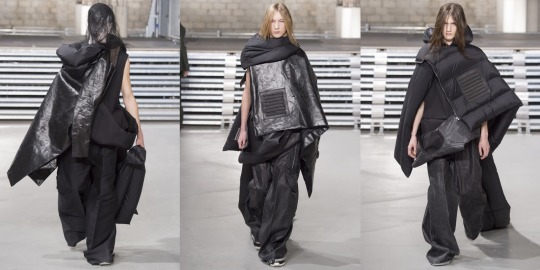
The look is romantic, dark, longing for death, partly edgy, partly overloaded. All aspects that exude a constant attraction from the clothing, as people are often drawn to "the other," sometimes even "the forbidden." The look can also be easily detached from the actual Post-Punk/Goth culture - something postmodernity excels at. The style of the Gothic culture can be perfectly broken down into its individual parts and used as a kind of aesthetic sandbox. Here a thick heavy chain, there's a choker, here big long earrings, add a pair of black high combat boots, a slim-fitted mesh shirt, and preferably paint the nails, and you're done. All things that houses like Prada, Marni, Bottega Veneta, for example, have done right.
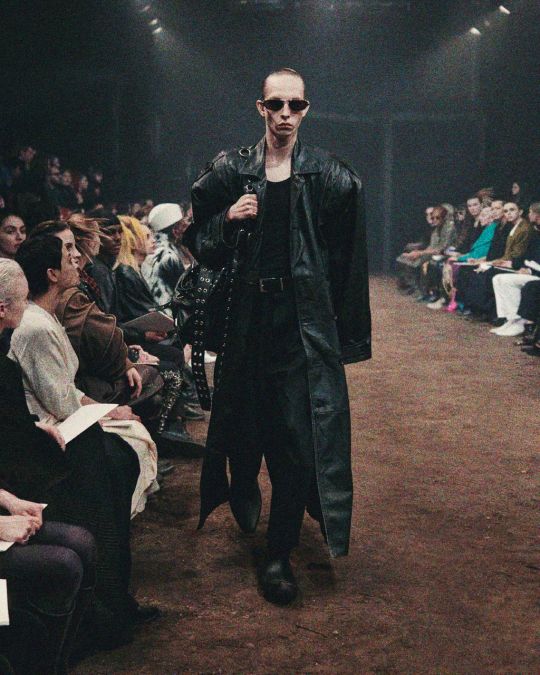
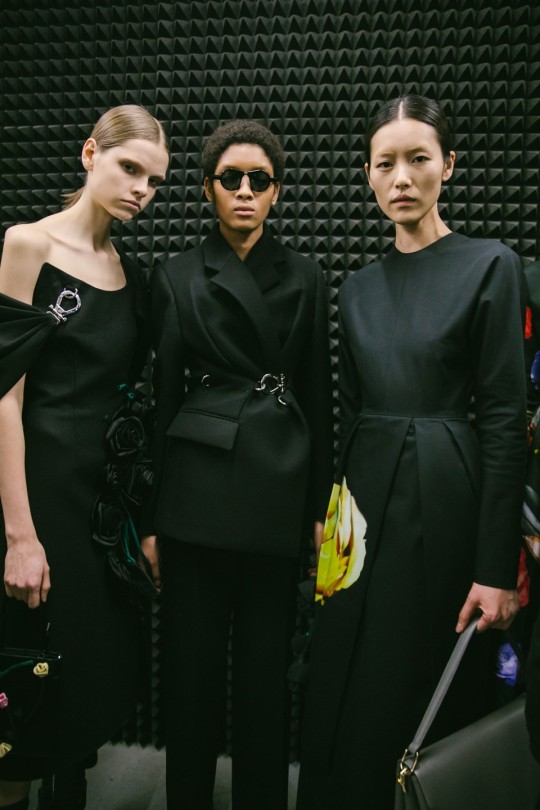
What we see today in the Post-Punk-influenced style and what we interpret as avant-garde should actually be considered a modern tradition. Post-Punk fashion embodies the music and the spirit of the time it emerged and aligns with deeper existential discourses. The design language and atmosphere of that time are now used by traditional fashion houses to incorporate young designers into their ranks and increase their relevance, merely fulfilling their quota to be considered part of the traditional fashion pipeline of LV, Dior, Gucci, and Balenciaga. The avant-garde cannot be seen as so established. The rapid growth these companies have undergone to make billions and the inheritance method of finding a designer to take over the house are enough to profile themselves as industry magnates.

In a world where fashion constantly reinvents itself, the enduring legacy of post-punk culture persists as a modern tradition. From the raw, rebellious sounds of bands like Joy Division to the avant-garde designs of Ann Demeulemeester and Raf Simons, the essence of post-punk continues to captivate hearts and minds. As luxury fashion houses seamlessly incorporate this style, it's vital to recognize the roots and the countercultural spirit that birthed it.
The romantic, dark allure, the edgy overtones – they all beckon, inviting us to explore "the other," even the forbidden. Yet, amidst the mainstream adoption, a call echoes for authenticity. True avant-gardists, whether musicians or designers, carve their paths, declaring, "This is our thing." The new avant-garde emerges not just from runways but from the pulsating hearts of those deeply rooted in their subcultures.
In a world dominated by industry magnates, the journey of post-punk fashion from the underground to luxury houses is a testament to its enduring power. As we witness the evolution, let us celebrate the genuine, the authentic, and the countercultural voices shaping the new avant-garde.
So, whether draped in asymmetrical cuts or sporting a rebellious attitude, the message is clear: The post-punk spirit lives on, and the next wave of avant-garde creators is ready to make their mark, confidently declaring, "This is our thing."
Davis Jahn
#post punk#gothic#fashion#ann demeulemeester#prada#balenciaga#punk rock#punk#writing#philosophy#art#avant garde#avant garde fashion#raf simons
80 notes
·
View notes
Text
Eroticism and Early Britpunk Fashion
Recently I read an interesting post about rockstars, a once ubiquitous sub-category of celebrity that's currently fallen to the cultural wayside, and how eroticism is often an integral component of their public images.
And that got me thinking about early (as in 1976-1978) Britpunk's relationship to eroticism and sex. So here's a silly, rather disorganized write up I did on how sexual Britpunk fashion is and why I think that appealed to certain people.
Unlike many youth subcultures, Britpunk- which, for those who don't know, is the British version of the punk subculture- tended towards asexual puritanism. Both as a reaction to the free love movement of the hippies that Britpunk characterized itself as being inherently in opposition to in both behavior and values, and as an extension of the theory put forward by Greil Marcus about punks being the spiritual successors to medieval heretics who considered the material world to be wholly corrupt- including and especially carnal pleasures such as sex.
Viv Albertine notes in her autobiography that in Britpunk culture sex was treated as a commodity, no emotional attachment needed. Johnny Rotten, the main figurehead of the punk movement at the time, once famously called sex 'five minutes of squelching sounds' and his deep disgust for anything sexual did a lot to shape the subculture's negative perception of sex. There are barely any Britpunk songs from the era that portray romance as something positive and even less that discuss sex in any way at all.
So isn't it a bit odd that Britpunk fashion is so sexual? Because it is very sexual.
A lot of original Britpunk fashion is appropriated fetish gear. Bondage suits, leather, collars, and latex. SEX/Seditionaries, Malcolm McLaren and Vivienne Westwood's boutique that basically single-handedly created the iconic look of early Britpunk, carried all of this along with t-shirts with sexual images- such as a pair of women's breasts or the word 'perv' spelled out in chicken bones- or actual porn on them- such as drawings of cowboys touching tips or Snow White having a gang bang with the Seven Dwarfs. The London Leatherman, who got his start in the gay leather scene, made leather clothes and accessories for bands like the Sex Pistols and The Clash and The Slits while allowing McLaren and Westwood to sell his wares in their store. Ripped clothes that showed off the chest and chains as an accessory were also common. Because of this the average punker in London was decked out in clothes that wouldn't look out of place in a sex club.
Let's take a look at some examples.

(Johnny Rotten of the Sex Pistols wearing a handcuff around his wrist and a t-shirt with a drawing of gay cowboys that resembles Tom of Finland's work on it.)

(Paul Simonon of The Clash wearing a shirt that says 'everyone's a prostitute' and has two scantily clad women on it.)

(Siouxsie Sioux wearing a t-shirt with a pair of women's breasts on it.)

(Soo Catwoman wearing a spiked collar with a chain around her neck.)

(Various members of the Bromley Contingent, including actual dominatrix Linda, wearing various erotic clothing items such as a see through dress, collars, and leather shorts.)

(Jordan and Vivienne Westwood wearing full bondage suits.)

(Sid Vicious of the Sex Pistols wearing a ripped version of the gay cowboys shirt that intentionally exposes his naval and nipple.)

(Adam Ant wearing a leather t-shirt.)

(Paul Simonon of The Clash wearing a leather jacket, leather trousers, and a spiked leather wristband while exposing his bare chest.)

(Alan Jones wearing a shirt that says 'perv' on it and Chrissie Hynde wearing a latex or leather top while another woman wears a latex or leather dress.)
So if Britpunk was so anti-sex, why play with such erotic imagery?
For Vivienne Westwood and Malcolm McLaren, fashion was an art form that was all about bringing the taboos of the repressed British culture out from the shadows, including and especially the aesthetics of sex. They wanted to shock people out of their complacency and liberate young people. What better way to do that then to turn something as incredibly taboo as fetishes primarily associated with gay men (latex, leather, and bondage) into the hot new couture? But neither Westwood nor McLaren were actually interested in sex (especially not with each other despite having a child together) and were content to simply explore it in an artistic and emotionally distant way. Their clothes are sexual but they aren't sexy. The eroticism exists primarily to make a point, not to tantalize.
Westwood about SEX/Seditionaries' clothes: "We’re here to convert, liberate and educate. We want to inspire people to have the confidence to live out their fantasies and change. What we’re really making is a political statement with our shop by attempting to attack the system."
But why wear these clothes? Obviously teenagers and young adults love the idea of doing (and wearing) taboo things that piss off their parents and other boring old farts. Obviously fans of the Sex Pistols, The Clash, and other punk bands wanted to dress like their idols and set themselves apart from the average citizen. But why else did punkers- in particular young female punkers- latch on so heavily to such risque fashion?
Well, to steal one of the few good lines from Danny Boyle's Pistol, when you dress like that you get a lot of funny looks but no wolf whistles.
If you've spent enough time online, you may be familiar with the concept of danger hair. If not, it basically means that if a young woman has brightly colored dyed hair then she's crazy and you shouldn't bother hitting on her. Kind of like how a poison dart frog is brightly colored to let birds know that it's deathly poisonous and they shouldn't bother eating it. Obviously this phrase is misogynistic but it does have a kernel of truth to it. Throughout history certain women have chosen to dress in ways that are intentionally unappealing to the majority of men in order to ward off unwanted advances.
Britpunk fashion on women was, despite how sexual it was, deeply unappealing to men. Legs McNeil, co-founder of PUNK magazine, talked extensively about how vile he found punk girls who dressed in the Britpunk style, how sexually unappealing they were to him. Little did he know, that's why those girls were dressing like that in the first place.
Back in the 1970s, the Britpunk style was beyond shocking to the majority of people. If you were a teenage girl or young woman who didn't want anyone to catcall you or make random passes at you while you were out on the town, decking yourself out in the latest clothes from SEX was a great way to get most men off your back. Instead of danger hair, it was danger clothes. Just because you were dressed in a sexual way didn't mean you were dressed sexy- at least in the opinion of the average man at the time.
Unfortunately though you'd just be trading in one form of violence for another as it was common for members of other youth subcultures to brutally attack punks who wandered the streets alone.
These days though everyone wants a punk girlfriend. Too bad they won't be getting one!

#punk#punk fashion#punk rock#vivienne westwood#sex pistols#the clash#siouxsie and the banshees#original post#put a good deal of effort into this one despite it having barely anything to do with what im meant to be posting about
24 notes
·
View notes
Text
all three of the Beastie Boys are at their finest during the Paul's Boutique era, you can't change my mind





#beastie boys#mike d's hats just get me every time#yauch's beard too#and ad rock just looking delectable
3 notes
·
View notes
Text

imagen de Mary Austin, Freddie Mercury y Roger Taylor en el Marquee Club (1973).
Dicen que “vivir solo cuesta vida”. No es una frase tomada de una canción de Queen pero bien puede aplicarse a su líder. Porque en sus cortos pero infinitos 45 años de vida, Freddie Mercury o Farrokh Bomi Bulsara “las hizo todas”. Fue voz y talento de uno de los grupos más exitosos de todos los tiempos. Grabó discos como líder de una banda, pero también como solista. Vivió un largo y profundo romance con Mary Austin y le compuso una canción que se transformó en himno. Rompieron el noviazgo pero se convirtieron en amigos entrañables. Tuvo un asistente que lo amó y un manager que lo traicionó. Padeció una enfermedad que en ese momento era vergüenza y sentencia de muerte. El hombre que aseguraba que no quería llegar a viejo porque “sería muy aburrido”, hoy festejaría 76 años.
La amistad luego del amor
Freddie Mercury conoció a Mary Austin en 1970, cuando recién se había graduado en la carrera de Arte y Diseño Gráfico y Queen empezaba a dar sus primeros pasos. Junto al guitarrista Brian May, frecuentaban la boutique Biba. A Freddie le gustó una chica rubia, con la que coqueteaba su guitarrista. “Adelante Freddie, solo somos buenos amigos”, le dio vía libre el enrulado.
Mary y Mercury comenzaron un noviazgo que duró seis años. No se acabó por infidelidad ni por falta de amor. Se terminó cuando el músico le planteó las dudas sobre su sexualidad, algo que Mary ya sabía y comprendió sin condenar.
Nunca dieron el sí formalmente, pero Freddie siempre la mencionaba como su esposa y luego de la separación actuó como si lo hubieran hecho. Le compró un departamento y le ofreció trabajo como asistente. “Creemos el uno en el otro. Todos mis amantes me han preguntado por qué no podrían reemplazar a Mary. Es porque es sencillamente imposible”, argumentaba el cantante. Su amor lo hizo canción. Le compuso Love of My Life, una balada romántica pero no melosa que miles de parejas siguen usando para expresar a otro el amor. Aunque permaneció ligada a Mercury, Mary rehizo su vida y tuvo dos hijos con un empresario. El mayor, Richard, es el ahijado de Freddie.
El precio de la traición
Paul Prenter trabajaba en una radio de Belfast. Pasaba discos de soul y oldies por las noches. En 1975 conoció a Freddie Mercury. Las circunstancias del primer encuentro son difusas. Hay quienes aseguran que se conocieron en un bar, en una de las habituales incursiones nocturnas de Freddie; mientras que otros sostienen que primero se convirtió en asistente del manager de la banda y que así, trabajando, se produjo el primer acercamiento. Poco importa. Porque con el tiempo Prenter ganó un lugar destacado en la vida de Mercury. Fue su amante, su asistente personal y manager.
Muchos ven a Prenter como una sombra mala en la vida de la banda. En 1982 Queen editó el peor de sus discos, Hot Space. Un híbrido sin rumbo ni fuerza que muestra al grupo desorientado, solo salvado por esa joya indeleble que es “Under Pressure” en colaboración con David Bowie. Los otros miembros de la banda endilgan ese fracaso a Prenter y a su (mala) influencia en Mercury. Parece difícil creer que haya sucedido de esa forma. Es que su actuación como manager fue demasiado prolongada (desde 1977 hasta 1985) como para que los haya tomado por sorpresa y obligado a hacer cosas y tomado decisiones artísticas contra su voluntad.
Prenter, además de por su relación íntima con Mercury, consiguió su lugar como manager al delatar frente a los otros tres miembros del grupo que el anterior encargado de los negocios de Queen, John Reid, estaba negociando para conseguir un disco solista para Mercury. Paradójicamente, seis años después, fue Prenter el que firmó un muy beneficioso acuerdo de varios millones de dólares para la aventura solitaria de Mercury. El disco se llamó Mr. Bad Guy y no tuvo demasiada repercusión.
Pero si quedan dudas de su influencia como manager, no las hay en su rol de “traidor”. En mayo de 1987, la intimidad de Freddie Mercury ocupó la portada de los diarios sensacionalistas ingleses por varios días. Prenter vendió a su amigo por 32 mil libras de la época. The Sun fue publicando las declaraciones de Prenter día a día. Primero llevó a la tapa la noticia de que dos de los amantes de Mercury habían muerto de sida.
Las revelaciones sobre la vida privada de Mercury siguieron. El morbo estaba de fiesta. “Es más fácil que Freddie camine sobre las aguas que verlo salir con mujeres”. También contó que Freddie tuvo su primera relación homosexual a los 14 años en la India mientras cursaba sus primeros años en el colegio secundario, y que en las giras Mercury continuaba de fiesta todos los días hasta las 7 de la mañana y que siempre conseguía algún hombre con quien dormir. De su talento no se decía nada, de su intimidad se contaba todo.
El escándalo se esparció a una velocidad pasmosa benefici��ndose de la sed de sensacionalismo del público y de la homofobia reinante. ¿Qué llevó a Prenter a semejante infidencia? Las motivaciones fueron varias. Se impuso el despecho por la ruptura y porque Mercury estaba en pareja con Jim Hutton, con quien permaneció hasta su muerte. También influyó la buena oferta económica (alrededor de 130 mil dólares actuales) y la tentación por concitar la atención pública, el deseo de ser famoso.
Mercury no le perdonó la delación y las múltiples infidencias y, a pesar de los intentos de Prenter por contactarse con él, nunca más aceptó hablarle. Prenter, tiempo después, justificó su decisión alegando que la presión de los periodistas fue insoportable para él. No parece un gran argumento.
El amor incondicional
Una noche cualquiera de 1984, Jim Hutton bebe una copa en un club de Londres. Su novio va al baño y se le acerca un hombre de jean, chaleco blanco y bigote tupido que lo invita a tomar una copa. Jim lo no nota poco atractivo, lejos de su tipo, y lo rechaza amablemente, pero el hombre insiste y le pregunta en qué anda. “Será mejor que se lo preguntes a mi novio”, lo despacha, ya algo ofuscado.
Hutton, de nacionalidad irlandesa y oficio peluquero, no sabía que se le había insinuado uno de los músicos más importantes del planeta. Su novio de entonces sí tomó real dimensión, más orgulloso que celoso por la situación. Seis meses después, otro encuentro casual, esta vez en un restaurante. “A que no sabes quién está sentado detrás de ti… ¡Freddie Mercury!”, lo avispó su compañero ocasional. Su reacción fue, otra vez, de indiferencia.
Año y medio después, Mercury y Hutton volvieron a coincidir en un club, y esta vez sí aceptó la proposición para ir a cenar. En 1986 se casaron informalmente –la única manera posible para la época- y se fueron de luna de miel a Japón. Jim fue quien tomó las últimas fotos de Freddie en Garden Lodge que dieron la vuelta al mundo hace un tiempo. Se lo ve cansado, flaco, pero tranquilo. Feliz, si se permite la palabra. Así fue como pasó sus últimos días.
¿Quién quiere vivir para siempre?
Después del Magic Tour, Mercury decidió que no iba a hacer más giras por un buen rato. Según Phoebe, sabía que algo no estaba bien en su cuerpo y sospechaba la razón. A mediados de los ’80, el sida ya hacía estragos y la homosexualidad todavía era un tabú. De hecho, Mercury nunca se manifestó abiertamente sobre su sexualidad, incluso lo mantuvo a resguardo de sus padres hasta su muerte. Fue el público el que lo enarboló como bandera gay. Él, en cambio, prefería la ambigüedad y la ironía, para dejar en claro que lo que importaba realmente era su trabajo artístico “He escuchado que duermes con hombres”, lo interpeló un periodista en una ocasión. El contraataque del cantante fue letal: “Yo duermo con hombres, duermo con mujeres y duermo con mis gatos… ¿qué tiene que ver eso con mi música?”.
La historia ubica a la Pascua de 1987 como el momento en el que el músico conoció el diagnóstico. Mercury resolvió mantenerlo en su círculo íntimo: sus tres mosqueteros, su cocinero y ex novio, Joe Fanelli, y, posteriormente, sus compañeros de banda. Se lo contó a Jim al regreso de un viaje a Irlanda y le ofreció separarse. “Yo te amo Freddie, y no me voy a ir a ningún lado”, fue la amorosa respuesta.
La enfermedad avanzaba más a prisa que las curas o los paliativos y cada vez era más difícil mantener el secreto. Freddie realizó su última aparición pública, en febrero de 1990, durante una premiación de los Brit Awards.
Recluido en Garden Lodge tomó la decisión de suspender su medicación. Solo tomaría los calmantes. Estaba claro, y todos coinciden, en que Freddie iba a vivir hasta que él quisiera. “Fue decisión de Freddie terminar todo”, contó Mary Austin. “Su calidad de vida había cambiado dramáticamente y cada día sufría más dolor. Había perdido la vista, su cuerpo era cada día más débil”.
Vivió las últimas semanas sereno, con visitas de los íntimos y muchos momentos de paz y risas.
Freddie se apartó de la música y se refugió en la pintura, un hobbie que había dejado suspendido en el tiempo desde su graduación en Arte y Diseño Gráfico. Días antes de su fallecimiento, le pidió a sus amigos que lo ayudaran a dar un paseo. “Quería ver sus cuadros por última vez”, contó su asistente. Terry, guardaespaldas y chofer, lo cargó para bajar las escaleras, y Freddie caminó por el living y el salón japonés con ayuda de sus amigos.
El viernes 22 de noviembre, los seguidores de Queen comprobaron que la peor de sus sospechas era cierta. En un comunicado anunció “Respondiendo a las informaciones y conjeturas que sobre mí han aparecido en la prensa desde hace dos semanas, deseo confirmar que he dado positivo en las pruebas del virus y que tengo sida. Sentí que era correcto mantener esta información en privado para proteger la privacidad de quienes me rodean”.
“Ha llegado el momento de que mis amigos y mis fans en todo el mundo conozcan la verdad, y deseo que todos se unan a mí, a mis médicos y a todos los que padecen esta terrible enfermedad para luchar contra ella. Mi privacidad siempre ha sido especial para mí y soy famoso por casi no dar entrevistas. Por favor entiendan que esa política continuará”.
La tarde del 24 de noviembre, en compañía de su novio Jim Hutton, Freddie Mercury moría en su dormitorio de Garden Lodge.
Alguna vez Freddie le confesó a un periodista: “No quiero pasar a la historia como una de esas personas que se preocupan… que esperan que tras mi muerte yo quede como alguien que ha creado algo o que ha inventado algo. La vida es para vivirla”. Lo cumplió.
Vía: https://www.infobae.com/teleshow/infoshow/2020/09/05/freddie-mercury-la-mujer-que-amo-el-amante-que-lo-traiciono-y-el-novio-que-lo-acompano-hasta-el-instante-final/
6 notes
·
View notes
Text
Why Do We Love...
Lee Starkey
The first time we knew about Lee Starkey was at Sentimentalist's "Little Willow" website. In this great (and so much missed) Mauren fansite, there was a page for her children, and, of course, Lee was there!
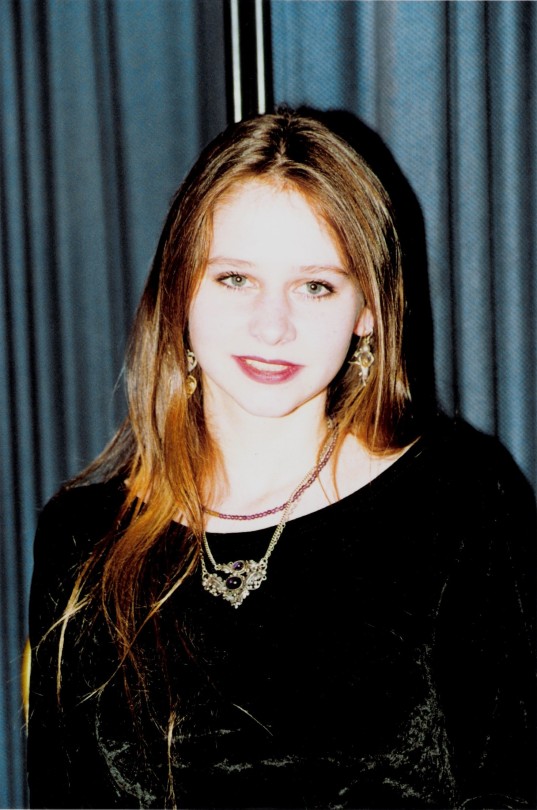
[Lee at her dad's "Time Takes Time" album release party in 1992. Our scan]
We were teenagers and this photo was the first we saw of Lee's (a very tiny version of it). She had this gothic/grunge/neo-hippy/rocker style that we loved! Her marble skin, her blue eyes, the long brown hair and the dark clothes combined with the chokers, pendants and rings was all that I loved then! (still do haha) We were just little girls in the 1990s and I wanted to be like this when grown up.
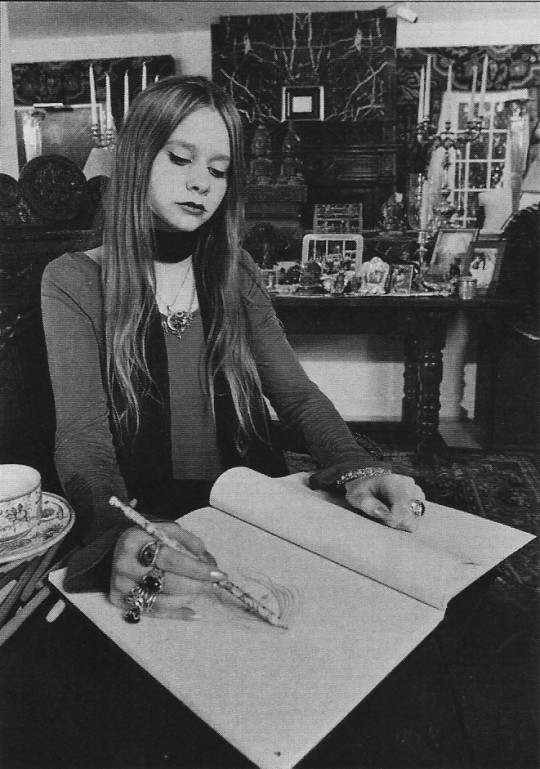
[Lee designing in 1991, our scan]
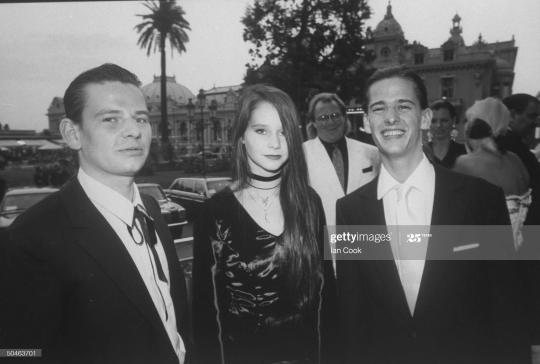
[In 1989 with her older brothers Zak and Jason, at their mother Maureen's wedding to second husband Isaac Tigrett in Monaco]
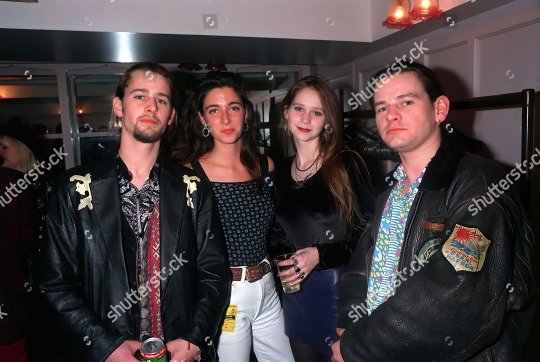
[Lee in 1992 with her older brothers and Mary McCartney, daughter of Beatle Paul]
Besides her style and beauty, soon we found out that se was the co-owner of a 1960s style fashion boutique in Los Angeles called "Planet Alice", which was very cool; and also that sadly she had a brain tumour when she was only 25, one year after loosing her mother.
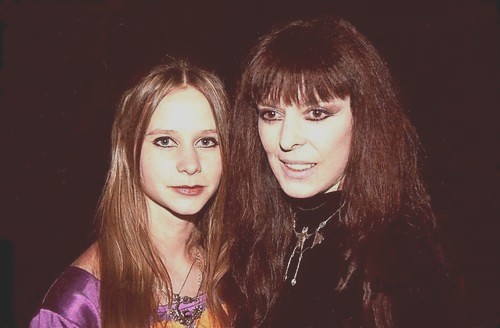
[Lee and her mum Maureen at the opening of Planet Alice in 1991, retouched by Lynn from Something About the Beatlegirls]

[Lee in 1992 with Stella, younger sister of Mary, and Maureen. She is wearing a dress she sold at her boutique]
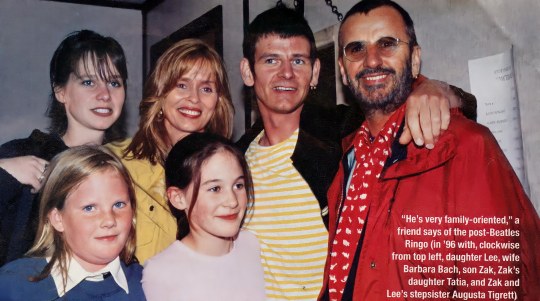
[Pictured in 1996 after her brain tumour was healed is Lee with her step-mother Barbara Bach, her brother Zak, their father Ringo, their half-sister Augusta, and Zak's daughter Tatia Jayne]
This was around the time George Harrison died and Lee had her second brain tumour herself, so we were sad and worried about her, but luckily she survived.
As with other muses, we built a website for her and a yahoo group, getting many beautiful and rare photos of her, specially from the 1980s and 1990s, our "favourite" Lee's eras.
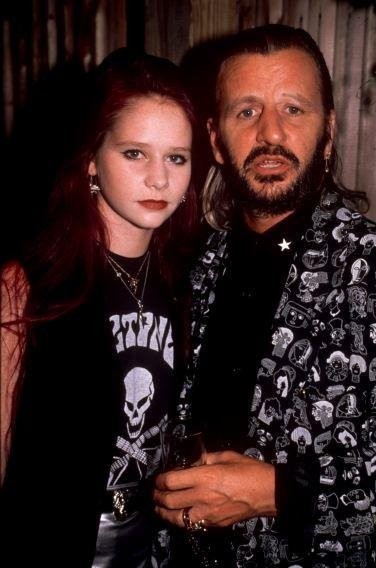
[Lee with her purple hair in 1989 with dad Ringo]
Thanks to all these websites, yahoo groups, facebook pages and now here, we can share our love for Lee and made lifetime friends who share their pictures and information with all of us.
We know Lee is a very private person, so everytime there is a new (or old!) picture of her we are thrilled, specially from the time she toured with her dad and was her stylist, or when she modelled for and worked in her Planet Alice shop!
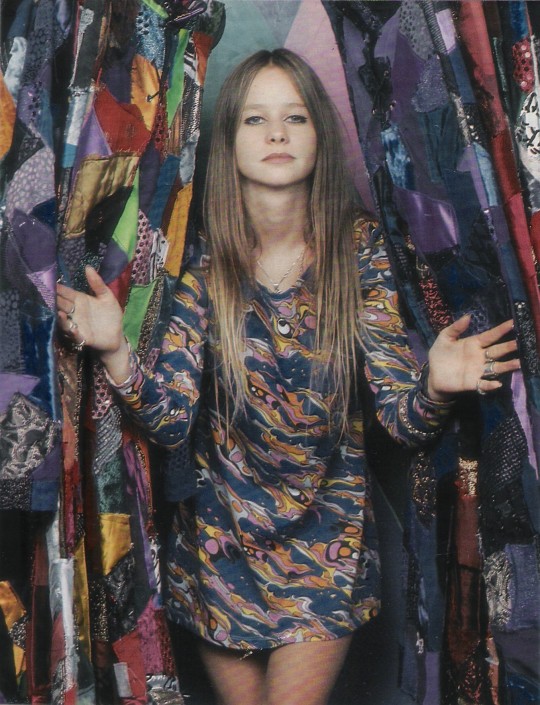
[1991 - Lee inside her Planet Alice shop in Los Angeles, modelling the designs she sells. Our scan]
We wish her shop would have been successful, we think today it would be, but hopefully we can collect pictures of back then, same as we collect her most recent ones. She had triplets and is living a healthy live, just as she deserves!
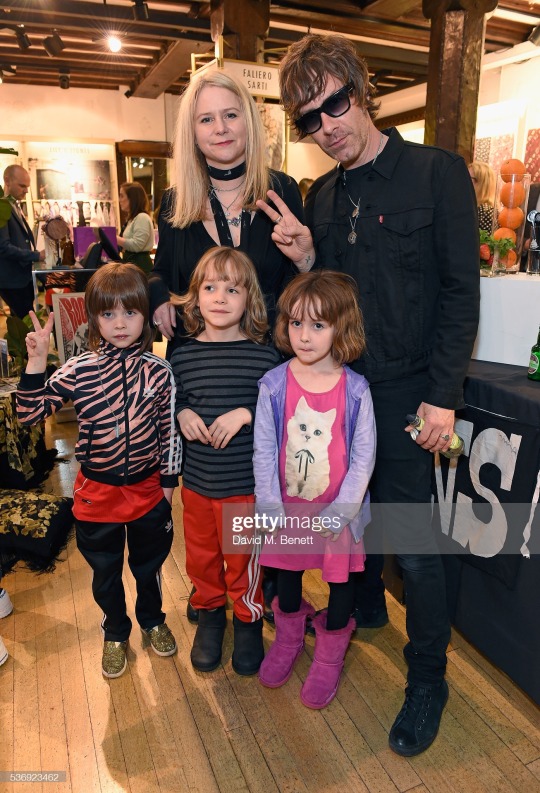
[Lee in 2016 with her partner, musician Jay Mehler, and their triplets Smokey, Jakamo and Ruby Tiger]
Today, for her 53rd birthday, we wanted to share with all of you, dear followers, how we knew about Lee and what made us love her.
Here we share:
OUR BIOGRAPHY OF HER, WITH LINKS TO AMAZING SITES
HER POSTS IN OUR BLOG
OUR PHOTO COLLECTION HOSTED AT GOOGLE PHOTOS — 1970s — 1980s — 1990s — 1990s Planet Alice — 2000s — 2020s (all the photos have been collected from the net, photographers, details, websites etc are credited when known)
HAPPY BIRTHDAY DEAR HIPPY GOTH CHICK!
#Why Do We Love#Lee Starkey#Our muses#boutique owner#model#fashion designer#Happy birthday#Happy birthday!#Happy bday#Happy bday!#links#sharing is caring#cancer survivor#1990s Lee#1980s Lee#Planet Alice#Lee model#Lee boutique owner#Lee fashion designer#Lee shop assistant#Maureen Starkey#Ringo Starr#Jay Mehler#Ruby Tiger Mehler#Jakamo Mehler#Smokey Mehler#Zak Starkey#Jason Starkey#Barbara Bach#Mary McCartney
8 notes
·
View notes
Text
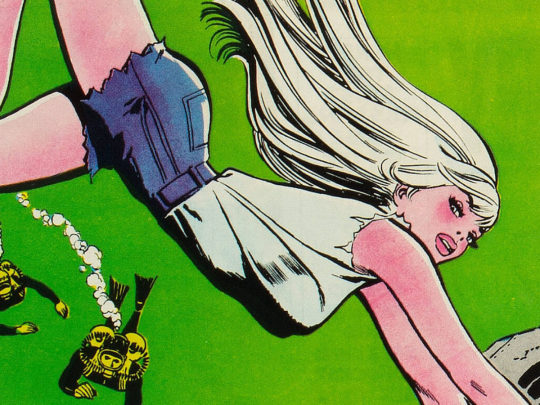
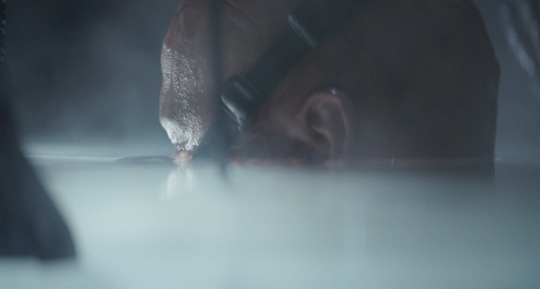



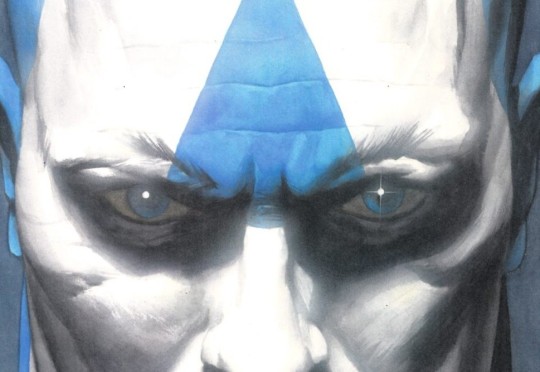


SHOW ME YOUR TUMBLR COVER PHOTOS AND I'LL SHOW YOU MINE.
PIC INFO: Spotlight on a number of Tumblr Cover photos I've been using all of this week, and I change it sometimes twice a day for the sake of variety. Can't you tell?
Featuring some Silver Age DC stuff (Dolphin rules! Love her!), Lord Vader in the awesome Bacta Tank scene from "Rogue One," some Thulsa Doom shield concept art from the '82 Conan film, the BEASTIE BOYS photographed by the late, great Ricky Powell during their "Paul's Boutique" era, Transformers G1 Arcee, Captain America as the Avenging Angel in Marvel's "Paradise X" series, GIZUMU, and more!
Sources: www.reddit.com/r/xmen/comments/j112w3, Bleeding Cool, STAR WARS Aficionado, Buhitter, Marvel (official), the Daily Beast, various, etc...
#Tumblr Cover Photos 2023#Cover Photos#Tumblr Cover Photos#Cover Photos 2023#Lord Vader#Conan the Barbarian 1982#Mojoworld#Supervillains#Earth-9997#Paul's Boutique#Japanese punk#Metal punk#G1 Arcee#Transformers G1#PARADISE X Vol. 1#Sci-fi Art#Mojoverse#Alex Ross Art#Alex Ross#Darth Vader#Bacta Tank#Summer Vibes#Rogue One#Concept Art#Women of DC#Arcee G1#Autobots G1#GIZUMU#BEASTIE BOYS#Ricky Powell
7 notes
·
View notes
Photo
Carlos McClendon (12 de outubro de 1923 - 16 de julho de 2008) foi um designer e dono de loja americano. Ele é provavelmente o modelo "desconhecido" mais famoso de George Platt-Lynes, aquele que enfeita a capa do mais recente livro de mesa de centro de George Platt-Lynes. McClendon teve relacionamentos com Christopher Isherwood , George Platt Lynes e Denham Fouts . Ele teve encontros com Monroe Wheeler , Lincoln Kirstein , Paul Cadmus e Bernard Perlin .
Carlos McClendon nasceu em Bakersfield, CA em 12 de outubro de 1923 e viveu os primeiros anos de sua vida no sul da Califórnia. Ele frequentou escolas em Long Beach e mais tarde obteve um BA pela UCLA. Durante e imediatamente após seus anos de faculdade, ele trabalhou no departamento de design do MGM Studios. Durante esse período, ele também foi dançarino da trupe de dança Marie Bryant.
Christopher Isherwood conheceu McClendon por meio de Denny Fouts e John Goodwin na década de 1940, quando McClendon visitava frequentemente a praia em Santa Monica. A amizade continuou muito depois de McClendon deixar Los Angeles no início da década de 1950.
No início de 1950, McClendon mudou-se para Nova York, onde rapidamente se tornou uma força influente e pioneira no varejo boutique, antes que a palavra boutique fosse de uso geral. Sua loja, chamada Chequer, na esquina da Third Avenue com a 50th Street, era especializada em objetos, móveis e roupas exclusivos de lugares como México, Haiti e Marrocos, que ele escolheu em suas viagens. A loja foi um sucesso imediato, notável pelo "olho" especial de McClendon para o belo e o incomum, e ele contava com Greta Garbo e muitos dos criadores de tendências de Nova York entre seus clientes regulares. A loja também inspirou vários imitadores.
No final dos anos 60, ele voltou para Los Angeles e abriu a Chequer West em Hollywood e duplicou o sucesso de seus anos em Nova York. A exclusividade de seu inventário e o fino acabamento de suas roupas feitas à mão rapidamente atraíram uma clientela de estrelas como Barbra Streisand , Candace Bergen e a bailarina Nora Kaye . A boutique apresentava modas nos tecidos mais fabulosos do leste do Extremo Oriente. Designs exclusivos da Costa Oeste pelo proprietário Carlos McClendon e por JoAnn Lopez. As especialidades eram vestidos longos e sem ajuste requintados para mulheres e belos caftãs e robes para homens, todos de materiais incrivelmente lindos como tecido sari indiano, chiffon tie-dye, seda bordada persa, tecidos antigos e seda com padrões de colagem. Cada um era único. Os vestidos custavam de US$ 120 a US$ 500 e os caftãs e robes de US$ 40 a US$ 300. As camisas masculinas foram desenhadas por Ken Scott e por McClendon em estampas e cores sólidas muito coloridas, com preços entre US$ 20 e US$ 60. Para os homens, também havia gravatas de 41/2 polegadas em estampas de seda e lã pura e coletes bordados do Afeganistão. A boutique era uma delícia para dar uma olhada. No pátio dos fundos, havia peças de mobiliário incomuns pintadas à mão por Micela Livingstone. Nas áreas frontal e superior, havia uma vasta seleção de presentes importados estranhos e maravilhosos, novos suéteres, cachecóis e joias e intrigantes bugigangas de todos os lugares.
A empresa Mendes em Paris se tornou um complexo internacional de produção e marketing que fabricava roupas de nomes como Yves Saint Laurent , Rive Gauche, Givenchy , Nouvelle Boutique, Jean Muir, Christian Bailly, Roland Chakkal e a estrela em ascensão da Terra do Sol Nascente, cujas roupas foram trazidas pela primeira vez para Los Angeles por Carlos McClendon, da Chequer West.
Jobey Baker foi um ator e artista que, na década de 1970, tornou-se joalheiro. Seus pingentes e anéis em marfim gravados com prata, com preços de S190 a US$ 2.000, estavam na Chequer West. Também estava em exposição o rag chubby de Carlos McClendon, uma jaqueta incrível feita de restos de tecidos orientais e costurada com o efeito de pele fofa. Com ela veio uma longa saia jeans, aparada novamente com os restos em babados estilo calipso.
Em 1976, Pamela Dewey criou uma nova coleção chamada "Addables and Wadables" vendida na Chequer West. A designer tinge à mão saias de cambraia de algodão, túnicas e tops em cores de picolé, permitindo que a usuária usasse "a moda como um acessório, misturando-os da maneira que a mulher deseja". De acordo com Carlos McClendon: "Quando conheci a Sra. Dewey em um desfile de moda experimental, pensei que ela tinha um talento especial. Suas roupas são animadas, alegres, muito elegantes, mas relaxadas. Ela tem um feeling para o que as mulheres da Califórnia querem agora. São roupas muito liberadas". O grande sucesso de Pamela Dewey foi uma mistura que ela rotulou de "o meio-vestido", que consistia em duas metades verticais separadas que amarravam nas laterais para se tornar um vestido convencional. As metades podiam ser trocadas para criar diferentes combinações de cores. Cada metade custava US$ 25.
McClendon se aposentou em 1986 e se mudou para Pojoaque, onde continuou como um apoiador anônimo das artes. Ele se mudou para Puerto Vallarta em janeiro de 2008 para passar seus últimos meses no Oceano Pacífico que ele amava.
Morador de Pojoaque/Nambe desde 1986, morreu de causas naturais em 16 de julho de 2008, em Puerto Vallarta, México. McClendon não deixa sobreviventes na família, mas um grupo de velhos e novos amigos. A cremação ocorreu e suas cinzas foram espalhadas no Novo México de acordo com seus desejos.

Carlos McClendon by George Platt Lynes
2K notes
·
View notes
Text
Love you Paul’s boutique era beastie boys
8 notes
·
View notes
Text
London’s Legacy: A Traveler’s Journey Through England’s Iconic Landmarks

London, a city where the past and present coexist in a seamless blend of history, culture, and modernity, has always captivated travelers with its timeless charm. As I set foot in this iconic metropolis, I knew I was about to embark on a journey through some of the most recognizable landmarks in the world, each with its own story to tell.
Day 1: The Majesty of Westminster
My journey began at Westminster, the heart of London’s political and royal heritage. The sight of Big Ben towering over the Thames left me in awe. Though I had seen it countless times in photographs, nothing compared to witnessing the grandeur of this iconic clock tower in person. Across the street stood the Palace of Westminster, home to the British Parliament, its Gothic architecture a striking reminder of the nation’s storied political past.
Walking further, I arrived at Westminster Abbey, a masterpiece of medieval architecture. As I stepped inside, I was transported through centuries of royal history, with kings and queens having been crowned, married, and buried within its hallowed walls. The sense of tradition and ceremony is palpable here, making it one of the most profound experiences of my visit.
Day 2: Royal Splendor and Urban Elegance
No trip to London is complete without visiting Buckingham Palace, the official residence of the British monarch. I joined the crowd gathered for the Changing of the Guard ceremony, a spectacle of British pomp and pageantry. The rhythmic march of the guards, clad in their red uniforms and bearskin hats, was a true embodiment of London’s regal spirit.
From Buckingham Palace, I ventured to Hyde Park, one of London’s largest and most beloved green spaces. Walking through its peaceful gardens, I paused by the Serpentine Lake to enjoy the tranquility. It’s hard to believe that amidst the city’s hustle and bustle, a serene oasis like Hyde Park exists.
Later, I visited Kensington Palace, the former residence of Princess Diana. The palace’s exhibitions gave me insight into the lives of Britain’s royal family, and strolling through its beautiful gardens felt like stepping into another era.
Day 3: Exploring London’s Historic Streets
On my third day, I took a journey back in time as I explored the Tower of London. This historic fortress has served as a royal palace, prison, and even a zoo. Standing in front of the White Tower, I imagined the turbulent events that unfolded here—executions, imprisonments, and the safeguarding of the Crown Jewels. Seeing the dazzling jewels firsthand, especially the infamous Koh-i-Noor diamond, was a surreal experience.
Next, I made my way to Tower Bridge, one of the most recognizable bridges in the world. The view from the glass walkway, suspended high above the Thames, was breathtaking. Looking down at the river flowing beneath me, I marveled at how this bridge has connected Londoners for over a century.
In the afternoon, I visited St. Paul’s Cathedral, an architectural masterpiece by Sir Christopher Wren. Climbing to the top of the dome was no small feat, but the panoramic view of London’s skyline from the Golden Gallery was worth every step. As I stood there, taking in the sight of modern skyscrapers blending with historic structures, I understood why London is often described as a city of contrasts.
Day 4: The Cultural Heart of London
I dedicated my final day to exploring London’s vibrant cultural scene. My first stop was the British Museum, home to countless artifacts from ancient civilizations. Walking through the Rosetta Stone exhibit and marveling at the Elgin Marbles, I realized how London has become a repository of world history and culture.
Later, I wandered through the streets of Covent Garden, a lively district filled with street performers, boutiques, and restaurants. The energy of the place was contagious, and I found myself spending hours just soaking in the atmosphere.
In the evening, I headed to Piccadilly Circus, with its neon signs and bustling crowds, before capping off my night in the West End. Watching a live performance in one of London’s renowned theaters was the perfect way to conclude my journey through this dynamic city.
Conclusion: London’s Legacy with Roomchai Limited
London is a city that offers something for every traveler, whether you’re drawn by its royal heritage, historic landmarks, or vibrant cultural scene. Navigating such a vast and storied city requires careful planning, and I was glad to have Roomchai Limited assisting me throughout the trip. Their expertise in crafting a well-rounded itinerary allowed me to experience London’s most iconic sites while uncovering its hidden gems.
While other agencies like Obokash and ShareTrip offer packages to explore London, Roomchai’s personalized approach made my journey truly special. With their attention to detail and deep knowledge of the city, they ensured that I experienced London’s rich legacy in a way that felt both seamless and unforgettable.
0 notes
Text
Carlos McClendon
Carlos McClendon (12 de outubro de 1923 - 16 de julho de 2008) foi um designer e dono de loja americano. Ele é provavelmente o modelo “desconhecido” mais famoso de George Platt-Lynes, aquele que enfeita a capa do mais recente livro de mesa de centro de George Platt-Lynes. McClendon teve relacionamentos com Christopher Isherwood , George Platt Lynes e Denham Fouts . Ele teve encontros com Monroe Wheeler , Lincoln Kirstein , Paul Cadmus e Bernard Perlin .
Carlos McClendon nasceu em Bakersfield, CA em 12 de outubro de 1923 e viveu os primeiros anos de sua vida no sul da Califórnia. Ele frequentou escolas em Long Beach e mais tarde obteve um BA pela UCLA. Durante e imediatamente após seus anos de faculdade, ele trabalhou no departamento de design do MGM Studios. Durante esse período, ele também foi dançarino da trupe de dança Marie Bryant.
Christopher Isherwood conheceu McClendon por meio de Denny Fouts e John Goodwin na década de 1940, quando McClendon visitava frequentemente a praia em Santa Monica. A amizade continuou muito depois de McClendon deixar Los Angeles no início da década de 1950.
No início de 1950, McClendon mudou-se para Nova York, onde rapidamente se tornou uma força influente e pioneira no varejo boutique, antes que a palavra boutique fosse de uso geral. Sua loja, chamada Chequer, na esquina da Third Avenue com a 50th Street, era especializada em objetos, móveis e roupas exclusivos de lugares como México, Haiti e Marrocos, que ele escolheu em suas viagens. A loja foi um sucesso imediato, notável pelo “olho” especial de McClendon para o belo e o incomum, e ele contava com Greta Garbo e muitos dos criadores de tendências de Nova York entre seus clientes regulares. A loja também inspirou vários imitadores.
No final dos anos 60, ele voltou para Los Angeles e abriu a Chequer West em Hollywood e duplicou o sucesso de seus anos em Nova York. A exclusividade de seu inventário e o fino acabamento de suas roupas feitas à mão rapidamente atraíram uma clientela de estrelas como Barbra Streisand , Candace Bergen e a bailarina Nora Kaye . A boutique apresentava modas nos tecidos mais fabulosos do leste do Extremo Oriente. Designs exclusivos da Costa Oeste pelo proprietário Carlos McClendon e por JoAnn Lopez. As especialidades eram vestidos longos e sem ajuste requintados para mulheres e belos caftãs e robes para homens, todos de materiais incrivelmente lindos como tecido sari indiano, chiffon tie-dye, seda bordada persa, tecidos antigos e seda com padrões de colagem. Cada um era único. Os vestidos custavam de US$ 120 a US$ 500 e os caftãs e robes de US$ 40 a US$ 300. As camisas masculinas foram desenhadas por Ken Scott e por McClendon em estampas e cores sólidas muito coloridas, com preços entre US$ 20 e US$ 60. Para os homens, também havia gravatas de 41/2 polegadas em estampas de seda e lã pura e coletes bordados do Afeganistão. A boutique era uma delícia para dar uma olhada. No pátio dos fundos, havia peças de mobiliário incomuns pintadas à mão por Micela Livingstone. Nas áreas frontal e superior, havia uma vasta seleção de presentes importados estranhos e maravilhosos, novos suéteres, cachecóis e joias e intrigantes bugigangas de todos os lugares.
A empresa Mendes em Paris se tornou um complexo internacional de produção e marketing que fabricava roupas de nomes como Yves Saint Laurent , Rive Gauche, Givenchy , Nouvelle Boutique, Jean Muir, Christian Bailly, Roland Chakkal e a estrela em ascensão da Terra do Sol Nascente, cujas roupas foram trazidas pela primeira vez para Los Angeles por Carlos McClendon, da Chequer West.
Jobey Baker foi um ator e artista que, na década de 1970, tornou-se joalheiro. Seus pingentes e anéis em marfim gravados com prata, com preços de S190 a US$ 2.000, estavam na Chequer West. Também estava em exposição o rag chubby de Carlos McClendon, uma jaqueta incrível feita de restos de tecidos orientais e costurada com o efeito de pele fofa. Com ela veio uma longa saia jeans, aparada novamente com os restos em babados estilo calipso.
Em 1976, Pamela Dewey criou uma nova coleção chamada “Addables and Wadables” vendida na Chequer West. A designer tinge à mão saias de cambraia de algodão, túnicas e tops em cores de picolé, permitindo que a usuária usasse “a moda como um acessório, misturando-os da maneira que a mulher deseja”. De acordo com Carlos McClendon: “Quando conheci a Sra. Dewey em um desfile de moda experimental, pensei que ela tinha um talento especial. Suas roupas são animadas, alegres, muito elegantes, mas relaxadas. Ela tem um feeling para o que as mulheres da Califórnia querem agora. São roupas muito liberadas”. O grande sucesso de Pamela Dewey foi uma mistura que ela rotulou de “o meio-vestido”, que consistia em duas metades verticais separadas que amarravam nas laterais para se tornar um vestido convencional. As metades podiam ser trocadas para criar diferentes combinações de cores. Cada metade custava US$ 25.
McClendon se aposentou em 1986 e se mudou para Pojoaque, onde continuou como um apoiador anônimo das artes. Ele se mudou para Puerto Vallarta em janeiro de 2008 para passar seus últimos meses no Oceano Pacífico que ele amava.
Morador de Pojoaque/Nambe desde 1986, morreu de causas naturais em 16 de julho de 2008, em Puerto Vallarta, México. McClendon não deixa sobreviventes na família, mas um grupo de velhos e novos amigos. A cremação ocorreu e suas cinzas foram espalhadas no Novo México de acordo com seus desejos.

Back to window | Carlos MacClendon par/by George Platt Lynes 1947
269 notes
·
View notes
Text
Exploring France: Top 10 Must-See Attractions

France, a country renowned for its rich history, stunning landscapes, and vibrant culture, is a treasure trove of unforgettable experiences. From iconic landmarks to charming villages, France offers something for every traveler to marvel at. Whether you're drawn to majestic castles, world-class art museums, or picturesque countryside, France promises to captivate your imagination. Here, we present the top 10 must-see attractions in France, each offering a glimpse into the country's timeless beauty and cultural heritage.
1. Eiffel Tower, Paris
No visit to France is complete without seeing the iconic Eiffel Tower in Paris. This architectural marvel, designed by Gustave Eiffel, offers breathtaking views of the city from its observation decks. Take a leisurely stroll along the Champ de Mars, picnic in the shadow of the tower, or embark on a romantic evening cruise along the Seine River for a truly memorable experience.
2. Louvre Museum, Paris
Immerse yourself in the world's largest art museum, the Louvre, located in the heart of Paris. Home to thousands of priceless works of art, including the enigmatic Mona Lisa and the majestic Venus de Milo, the Louvre is a must-visit for art enthusiasts and history buffs alike. Explore its labyrinthine galleries, marvel at ancient Egyptian artifacts, and discover masterpieces spanning centuries of artistic expression.
3. Mont Saint-Michel, Normandy
Perched atop a rocky island in Normandy's picturesque bay, Mont Saint-Michel is a UNESCO World Heritage Site and one of France's most iconic landmarks. Explore its medieval abbey, wander through winding cobblestone streets, and admire panoramic views of the surrounding coastline. Be sure to visit during low tide to witness the ethereal beauty of the abbey reflected in the shimmering waters below.
4. Palace of Versailles, Versailles
Step back in time to the opulent era of the French monarchy with a visit to the Palace of Versailles. This magnificent château, once the residence of Louis XIV, is renowned for its lavish gardens, grand halls, and ornate furnishings. Explore the Hall of Mirrors, stroll through the manicured grounds, and marvel at the spectacular fountains and statues that adorn the estate.
5. Notre-Dame Cathedral, Paris
Experience the awe-inspiring beauty of Notre-Dame Cathedral, a masterpiece of Gothic architecture located on the Île de la Cité in Paris. Admire its intricate façade, climb the towers for panoramic views of the city, and explore the interior, which houses priceless relics and stunning stained glass windows. Although undergoing restoration after the tragic fire in 2019, Notre-Dame remains a symbol of Parisian resilience and cultural heritage.
6. Provence Lavender Fields
Indulge your senses in the fragrant lavender fields of Provence, a region known for its breathtaking natural beauty and picturesque landscapes. From mid-June to early August, the rolling hills of Provence are blanketed in vibrant hues of purple, creating a mesmerizing sight that is sure to enchant visitors. Take a leisurely drive through the countryside, stopping to photograph the fields and sample local lavender products along the way.
7. French Riviera, Côte d'Azur
Experience the glitz and glamour of the French Riviera, a sun-soaked stretch of coastline dotted with glamorous resorts, pristine beaches, and chic boutiques. From the vibrant city of Nice to the glamorous principality of Monaco, the French Riviera offers endless opportunities for relaxation and indulgence. Lounge on the golden sands of Cannes, stroll along the promenade in Menton, or explore the charming hilltop villages of Eze and Saint-Paul-de-Vence.
8. Château de Chambord, Loire Valley
Journey to the enchanting Loire Valley and discover the fairytale-like Château de Chambord, the largest and most extravagant of the Loire Valley châteaux. Built as a hunting lodge for King Francis I, Chambord boasts a unique blend of Renaissance and French medieval architecture, with its distinctive double-helix staircase and sprawling grounds. Explore the royal chambers, wander through the vast forest, and marvel at the château's imposing façade.
9. D-Day Beaches, Normandy
Pay homage to the bravery and sacrifice of Allied forces with a visit to the D-Day beaches of Normandy. Walk in the footsteps of history along the sands of Omaha Beach, Utah Beach, and Juno Beach, where thousands of soldiers fought and died during the pivotal World War II invasion. Visit the American Cemetery at Omaha Beach, the Memorial de Caen, and other poignant sites that commemorate the heroes of D-Day.
10. Gorges du Verdon, Provence-Alpes-Côte d'Azur
Escape the hustle and bustle of city life and immerse yourself in the natural beauty of the Gorges du Verdon, often referred to as the "Grand Canyon of Europe." Carved by the turquoise waters of the Verdon River, this breathtaking canyon offers unparalleled opportunities for hiking, kayaking, and scenic drives. Marvel at the towering limestone cliffs, crystal-clear lakes, and verdant forests that make this region a haven for outdoor enthusiasts.
Driving in France for Foreigners:
Exploring France by car offers the freedom to discover its hidden gems at your own pace, from charming villages to scenic countryside. However, it's essential to familiarize yourself with French driving laws and regulations before hitting the road.
International Driving Permit (IDP) for France:
To legally drive in France as a foreigner, you'll need an International Driving Permit France (IDP) in addition to your valid driver's license from your home country. Fortunately, obtaining an IDP for France is a straightforward process that can be completed online.
Here's a step-by-step guide to applying for an International Driving Permit for France online:
0 notes
Text
Boston, Massachusetts, a city steeped in rich history and vibrant culture, stands as a testament to the birth of the United States. From revolutionary landmarks to picturesque parks and cutting-edge museums, Boston offers an array of activities that cater to every taste. In this guide, we'll delve into the best things to do in Boston, ensuring an unforgettable experience for visitors and locals alike.
Walk the Freedom Trail: Embark on a journey through history by walking the iconic Freedom Trail. This 2.5-mile-long path takes you through 16 historically significant sites, including the Massachusetts State House, Paul Revere's House, and the Old North Church.
Visit the Boston Common and Public Garden: Experience tranquility in the heart of the city at Boston Common and Public Garden. Stroll through lush greenery, ride the iconic Swan Boats, and enjoy the seasonal beauty of these interconnected public spaces.
Explore the Museum of Fine Arts: Art enthusiasts will find solace in the Museum of Fine Arts, boasting an extensive collection spanning ancient to contemporary art. Marvel at masterpieces by renowned artists and immerse yourself in diverse exhibitions.
Take a Stroll Down Newbury Street: For a dose of retail therapy and charming architecture, head to Newbury Street. This eight-block stretch is lined with boutiques, galleries, and cafes, offering a perfect blend of shopping and leisure.
Catch a Game at Fenway Park: Baseball fans can't miss a visit to Fenway Park, the oldest Major League Baseball stadium still in use. Immerse yourself in the electric atmosphere as you cheer on the Boston Red Sox.
Indulge in Culinary Delights at Quincy Market: Quincy Market, located in Faneuil Hall, is a food lover's paradise. Sample diverse cuisines from the array of vendors, and enjoy street performances and live music in the historic market.
Discover the Isabella Stewart Gardner Museum: This unique museum, housed in a Venetian-style palace, showcases Isabella Stewart Gardner's impressive art collection. Explore the lush courtyard and marvel at the eclectic mix of paintings, sculptures, and decorative arts.
Tour the Boston Tea Party Ships & Museum: Step back in time to the era of the American Revolution at the Boston Tea Party Ships & Museum. Participate in a reenactment of the historic event and gain insights into its significance.
Ascend to the Top of the Prudential Center: Take in panoramic views of the city from the Skywalk Observatory atop the Prudential Center. Witness Boston's skyline and landmarks, providing a breathtaking perspective of the city.
Immerse Yourself in Science at the Museum of Science: For a family-friendly adventure, the Museum of Science offers interactive exhibits, live demonstrations, and an IMAX theater, making science education fun and engaging for all ages.
Enjoy a Day at the Boston Common Frog Pond: In winter, the Boston Common Frog Pond transforms into a skating rink, providing a picturesque setting for ice skating. During the warmer months, it becomes a wading pool for children.
Visit the Boston Public Library: Book lovers will appreciate the grandeur of the Boston Public Library, the third-largest public library in the United States. Explore its vast collection, impressive architecture, and attend literary events.
Witness History at the John F. Kennedy Presidential Library and Museum: Delve into the life and legacy of President John F. Kennedy at his presidential library. Exhibits chronicle his presidency, highlighting key moments in American history.
Experience the Boston Symphony Orchestra at Symphony Hall: Music aficionados can enjoy a world-class performance by the Boston Symphony Orchestra at Symphony Hall. The venue's acoustics enhance the experience of classical and contemporary compositions.
Roam the Charlestown Navy Yard and USS Constitution Museum: Explore naval history at the Charlestown Navy Yard, home to the USS Constitution – the oldest commissioned warship afloat. The accompanying museum provides further insights into maritime heritage.
Wander Through Harvard Square and Harvard Yard: Venture across the Charles River to Cambridge and explore Harvard Square and Harvard Yard. Admire the prestigious university's architecture, visit historic landmarks, and absorb the vibrant student culture.
Take a Harbor Cruise: Discover Boston from a different perspective by embarking on a harbor cruise. Enjoy breathtaking views of the skyline, waterfront, and harbor islands while learning about the city's maritime history.
Savor Seafood at Legal Sea Foods: No visit to Boston is complete without indulging in its renowned seafood. Head to Legal Sea Foods for a delectable dining experience featuring fresh catches and classic New England dishes.
Attend a Performance at the Boston Opera House: For a touch of elegance and cultural enrichment, catch a live performance at the Boston Opera House. From Broadway shows to ballets, the venue hosts a variety of world-class productions.
Relax at the Arnold Arboretum: Escape the urban hustle and bustle in the Arnold Arboretum, a living museum of trees and plants. Wander through its well-maintained landscapes and enjoy a peaceful retreat within the city.
Conclusion:
Boston, with its blend of history, culture, and modernity, provides a diverse range of activities for all interests. Whether you're a history buff, art enthusiast, sports fan, or nature lover, the city has something to offer. So, pack your bags and immerse yourself in the charm of Boston, Massachusetts – a destination that seamlessly merges the past and present for an unforgettable experience.
0 notes
Text
Escape from mundane and averageness
Punk Rock and it’s origin story
Punk Rock was and is a response to the establishment. Punk rock affected music, fashion, and self-expression. Being offensive was the punk rockers main objective. This subculture was born in the U.K. Soon, people saw a rise in the U.S. Shocking the system and culture with makeup, clothing, beliefs, and music. Punk Rock was anti-Summer of Love. The psychedelic side of the 70s did not present well to these kids who were handed a chaotic world.
Britain was not in a good place at the start of Punk Rock. The fact that it was a scary, unsafe place fueled the subculture's inspiration. Social unrest because of strikes. Strikes affected everything such as garbage being left on the streets—inflation but also high unemployment. Overall living in Britain was gloomy, scary, and not harmonious. There were also power outs which would last for days. The youth was fed up and wanted to express that. 3-day workdays during a time like this were very hard to live with. Your boss didn't have enough to pay you so hours are cut and it's already a recession, I would freak out too.
Punk began on Kings Road around shops like “Sex”. Kings Road is where the Punk kids would congregate. This reminds me of fashion kids today who flock to Washington Square Park in search of the next micro trend. “It brought all these kids from all over the place– mainly the suburbs.”, Jordon Arena: Punk& the Pistols’(1995)
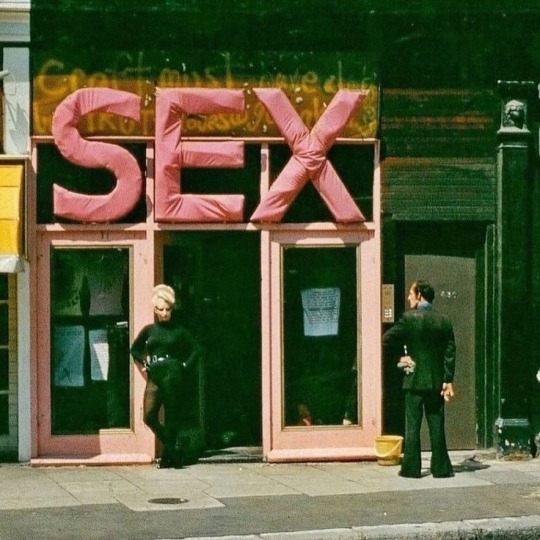
Vivienne Westwood and Malcolm McLaren opened Seditionaries Shops. McLaren launched the music side of punk: “Sex Pistols” and Westwood focused on “Sex”. The Sex Pistols would wear clothing from the boutique. The boutique sold leather and rubber fetish goods. The Buzzcocks, Siouxsie, the Banshees, and the Sex Pistols were at the forefront of showcasing Punk Rock music and fashion. Their fans would try to emulate them with the band's emulating trends from the street and other inspirations.
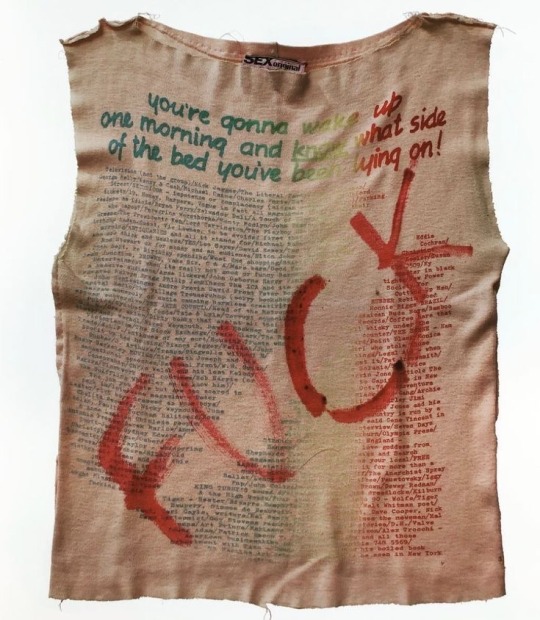
Punk in New York was established by bands like Lou Reed, the Ramones, Suicide, and the New York Dolls. Rock and Roll was being oversaturated and these artists wanted to redefine the scene. “They’d go to the thrift shops, where you could find vintage clothes”. Paul Zone. The DIY aspect was also in New York City. The Ramones created a uniform by shredding Levi's and wearing leather jackets. They didn't have money so the holes in their clothing were from wear and tear. At the time it was shameful to walk around with holes in your clothing but the Ramones didn’t care. Their attitude helped shape the subculture.
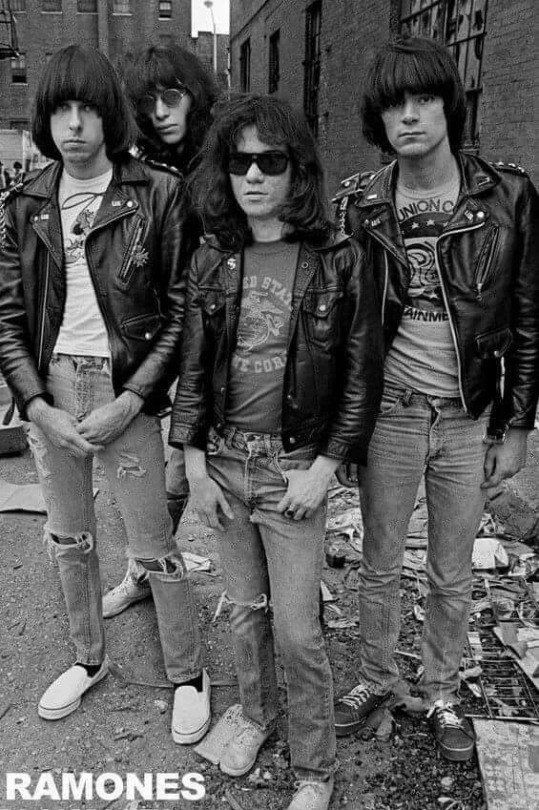
Malcolm McLaren managed the New York Dolls. He went back to the shop “Sex” and collaborated with his partner Vivienne Westwood to create a look for the Band the Sex Pistols. He put a British spin on the look and used the band to promote it.
“Part of it is to be threatening to look; part of it is to be confrontational”, Siouxsie Sioux in Arena: Punk& the Pistols (1995) To dress Punk meant you had to listen to punk rock. Many different aspects went into achieving the look. First is the DIY aspect. Anything could be made or redone with a pair of scissors. Distressing t-shirts, jeans, and jackets but basically anything is the first step. Almost personalizing your outfit with stenciled-on words or safety pins can add to the look. Studs, chains, and other metal hardware add to the punk rock look. The Punk could dress androgynous or gender-specific but some would argue that “shocking” is the key to the style. Tights that are ripped or fishnet are acceptable. Tartan and other plaids were used in different ways. Punk’s silhouette got narrower and sexier. Sex is a huge topic during the Punk Rock era because it was taboo. Taboo topics were not off limits during this era as you can clearly see through Vivienne Westwood’s seemingly Sex shop.
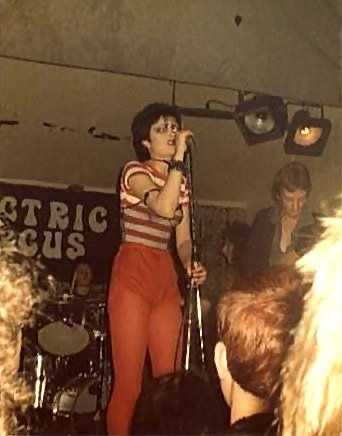
Make-up was exaggerated and bold. Bold eyeliner that was drawn over your whole eye and dark lines on your face was a must. Geometric shapes drawn on with eyeliner and then filled with eyeshadow were also very popular. Lips were like vampires' lips to accentuate the face. Dark reds and sometimes black were popular colors to use.
Body Piercings were commonly done on the earlobes. Studs and safety pins were pierced through the eyebrows, cheeks, noses, and lips. This was quite shocking at the time. Body piercings were intended to offend the masses. Men also participated in piercing their bodies. Punk was and remains unisex.
Bondage in the early punk movement inspired black leather, studs, chains, and rubber that you saw throughout the era. Vivienne Westwood’s shop “Sex” was the spot to get inspired and see the beginning of it. Straight Jackets were also huge during the beginning. It played fun at the public perceptions of Punks.
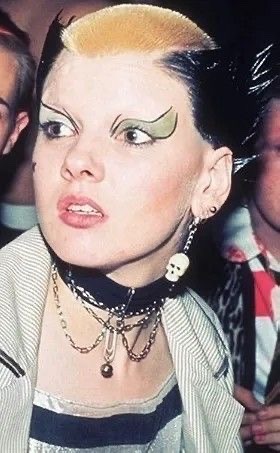
Hair was also a big tell-tell to see if you were a true punk rocker. The most famous hair look is Punk Spikes. These are still worn today. The Punk would take a gel or PVA glue and slick their hair into spikes or a mohawk. Mohawk is a Mohican Indian reference that the kids gained inspiration from also. They would also dye their hair unconventional colors like blue, or red with food coloring. Some would dye it black or bleach blonde but the girls seemed to have boy cuts to fit into the androgynous style. Kids would also shave the sides of their heads to have a colorful mohawk. Hair played into this style a lot. Identity was something to be played with while being a Punk.
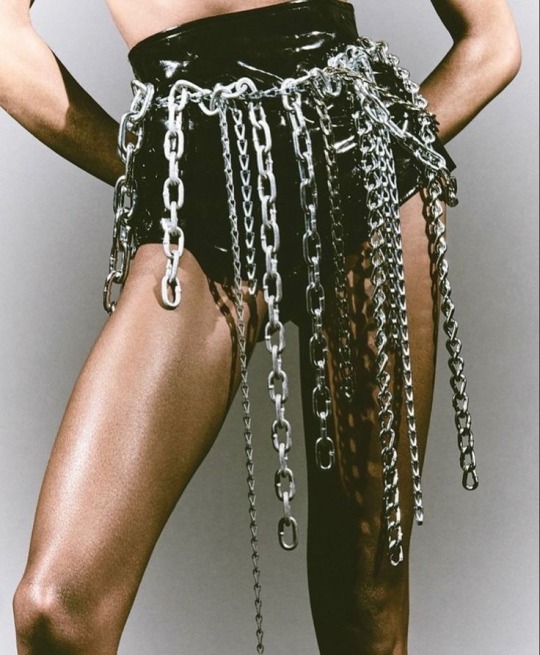
“Subversion lies in unpopular ideas” ‘Arena: Punk& the Pistols’(1995) Vivienne Westwood is a visionary. She was the first to do many things that were frowned upon and criticized mercilessly. She is the mother of Punk Rock. Her work influenced fashion for the better. At the beginning of her career, she helped integrate Punk Rock fashion into the mainstream and popularized it. Her way of distressing shirts and adding studs caught on with the kids and gave them somewhere to shop and draw inspiration from.
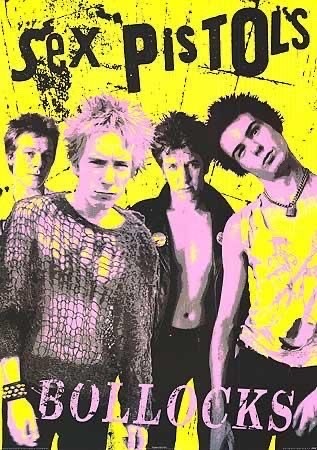
Vivienne Westwood had a muse named Jordon during the punk rock era. Jordon had an androgynous look that was popular during the late 70s and throughout the 80s. She traveled each day an hour from the city to hang out and be seen. I have a friend who does this but she’s an influencer which Jordon was technically speaking in modern terms. The girls wanted to look like her and Vivienne Westwood wanted to see her clothes and style. “In the end, it has an effect because it was original.” ‘Arena: Punk& the Pistols’(1995) Vivienne Westwood turned her store into Seditionaries. Then into her own brand. She continues to use aspects of Punk rock in her collections because she has to show appreciation for her past and beginning. Also when you think punk rock in terms of fashion you think of Vivienne Westwood.
Punk Rock ended and a new subculture developed from that one. The romanticism that Vivienne Westwood helps emulate with her pirate-themed wear and makeup. The subculture was not big enough to overtake disco in the U.S. and the U.K. was no longer going through social unrest. The energy was moved to the next thing.
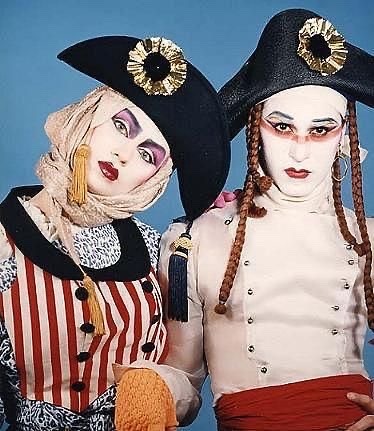
Brands continue to use aspects of Punk Rock in their collections such as Alexander McQueen, R13, Doc Martens, and Underground. Alexander McQueen SS98 to the present day has been incorporating punk rock fashion in his shows. The brand continues to use aspects like studs in its clothing and accessories. In their Pre SS21 collection Creative Director Sarah Burton uses a 1950s style pin heel and puts silver spiked studs on the toe. The shoe is made “modern” with the studs while still having that vintage aspect.
Works citied
https://journals.openedition.org/rfcb/1662
https://www.theglassmagazine.com/alexander-mcqueen-presents-the-punk-pumps/#:~:text=FROM%20the%20SS98%20collection%20to,to%20keep%20the%20spirit%20alive
https://pitchfork.com/features/from-our-partners/9943-rip-it-to-shreds-a-history-of-punk-and-style/
https://fashion-era.com/1970s/punk-fashion-history/
https://www.marieclaire.co.uk/fashion/a-brief-history-of-punk-fashion-79145
https://www.britannica.com/biography/Vivienne-Westwood
https://www.90sfashion.com/punk-clothing-brands/
0 notes
Text
pinned post to explain who tf i ammmmm
my name is ashmira, my pronouns are she/her, i’m a member of @thenightmarebluntrotation
i’m like, the opposite of an age regressor. i’m like an.. age progressor?? if thats even a thing
my memories are from childhood up to about age 14 but i’ve always felt like age 18-21
i’m from the era of ghd straighteners, paul’s boutique, t shirts with diamantés on, charlie body sprays, bluetoothing songs to your friends on your motorola razr
i’m not used to 2024 stuff like tiktok, apple watches, airpods, gen z calling my fashion sense vintage 🥲
my age is complicated but please treat me like an adult, as that is what feels appropriate to me
1 note
·
View note